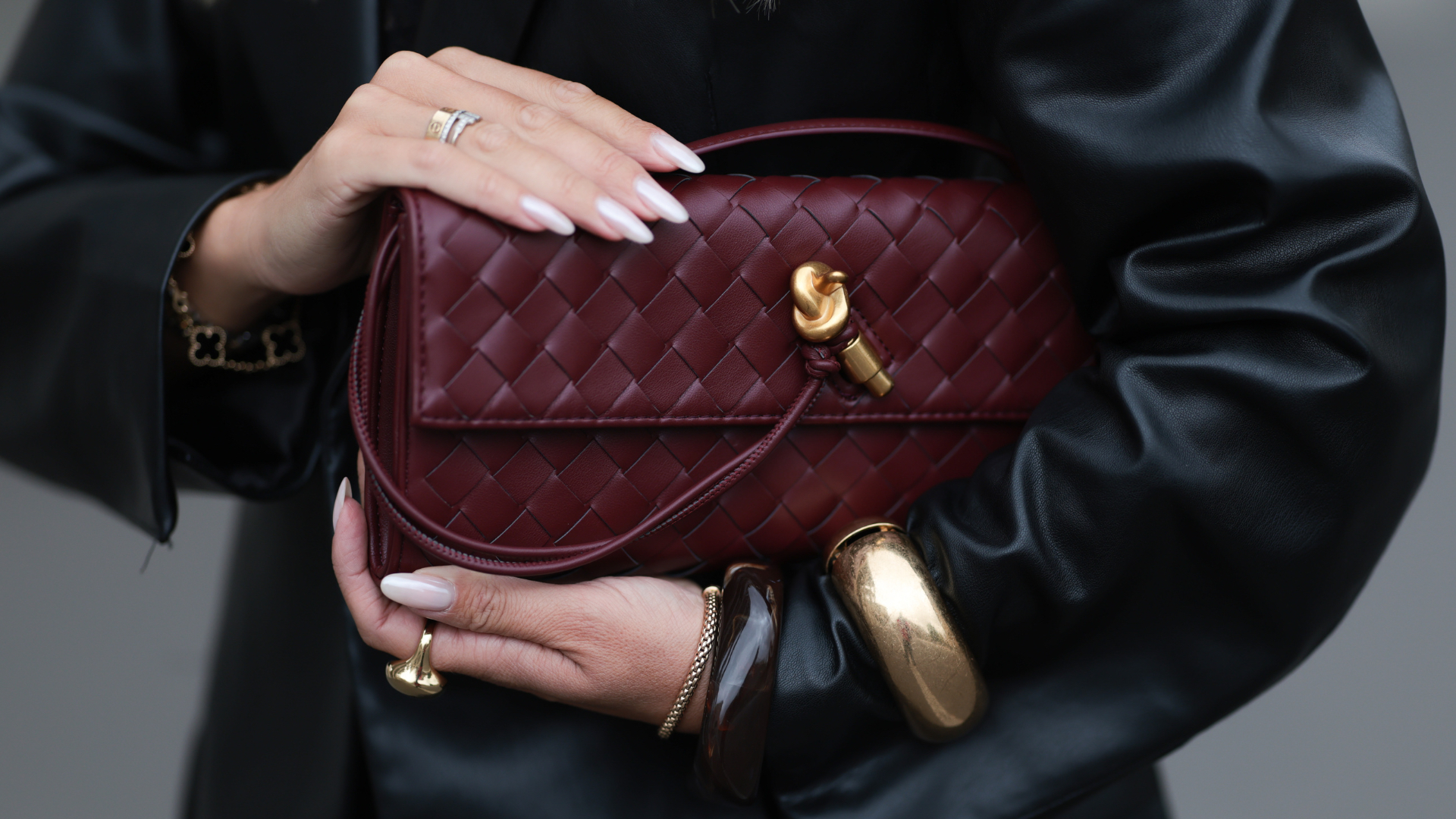A New ‘Hard BIAB’ Manicure Is Here—But Is It Better Than the Original?
Just when we thought BIAB couldn't get better


If there’s one nail service that could genuinely be described as a ‘game changer’ in the industry, it’s BIAB nails. The treatment is applied like polish but wears like acrylic, creating durable and glossy but totally natural-looking nails. For many, the more widespread availability of builder gels like BIAB (The Gel Bottle’s trademarked 'Builder-in-a-Bottle') has allowed them to grow their natural nails far beyond their usual length. And now, The Gel Bottle is taking things to another level with the launch of Hard BIAB.
Bringing a fresh meaning to the phrase ‘hard as nails’, this new gel levels up on the already impressive strength of BIAB. The brand—now in its tenth year—describes it as a ‘super-strength formula’ for those who need an even more durable manicure, want extra long natural nails or extensions, or both.
As a beauty journalist who’s always first in line to try the latest nail trends and services, Hard BIAB was immediately on my ‘must try’ list. I love regular BIAB and happen to be pretty heavy-handed (read: my natural nails break regularly). Plus, I'd recently snapped several nails and started my growth journey from scratch, so the timing couldn’t have been better.
Having now put it to the test, here’s everything you need to know about the new treatment, from how it differs from regular BIAB to how long it lasts.
What's new about Hard BIAB?
Though they are quite similar, there are a couple of key differences between BIAB and Hard BIAB. “The most noticeable is the change in the removal process: instead of soaking off in acetone, Hard BIAB requires filing off to remove the bulk,” explains Giorgia Cappella, The GelBottle’s head of education.
Hard BIAB is also closer to a more traditional hard gel in feel—I noticed that there was barely any flexibility to my nails post-manicure, where I can usually feel a bit of give with regular BIAB. “Existing BIAB fans may also notice a difference in rigidity and reduced flexibility,” Giorgia continues. “Standard BIAB has a slight give, mimicking the natural nail's slight movement; Hard BIAB is more solid and engineered for minimum flex.”
During the appointment, the process is otherwise very similar to a regular BIAB manicure. After removing any existing polish and shaping your nails, a clear base is first applied. Then, your manicurist paints, sculpts and cures thin layers of Hard BIAB to build up the strong layers, before finishing with top coat and cuticle oil. Because of these layers, it's again a little thicker than a regular gel manicure, but not to the extent that it looks unusual.
Celebrity news, beauty, fashion advice, and fascinating features, delivered straight to your inbox!
So far, Hard BIAB has launched in 12 neutral shades: Teddy, 17, 19, Dreamer, Fancy, Milky, Skye, Bonnie, Demure, Dolly, White and Clear—though we can probably expect more to be rolled out in the months and years to come.

How long does Hard BIAB last?
Hard BIAB should last at least three to four weeks, even for very heavy-handed or those with extra-long nails. “We recommend infilling a Hard BIAB manicure every three to four weeks to maintain the integrity of the apex and to prevent the product from becoming too heavy or unbalanced as the nail grows out,” says Georgia.
As with BIAB, there’s also a limit on how many times it’s healthy to infill the same manicure. “As best practice, we recommend getting a full, fresh set (which involves completely removing the product) every three to four appointments to ensure the application is best supportive of the nail. However, technicians should ensure nail health during the infill process at every appointment.”
How to choose between Hard BIAB
So, how to choose between the two? Ultimately, it comes down to what you need from your manicure, tailored to your lifestyle. “Clients should opt for Hard BIAB if they have an extremely demanding lifestyle and are prone to severe or frequent breakage, or if they want long nails that require the most rigid support possible,” Giorgia advises. “Essentially, if a client needs maximum, uncompromising durability, Hard BIAB is the superior choice. If they prefer the ease of a soak-off removal and don't require total rigidity, the original BIAB is best.”
Check back here to see how well my manicure lasts in the weeks to come.

Lucy is a freelance beauty editor and contributor at Marie Claire, and has also written for titles including Cosmopolitan, Refinery29, Glamour and woman&home. She was previously Marie Claire’s junior beauty editor. During her career, she’s covered everything from backstage beauty at fashion week to interviews with famous faces like Drag Race royalty and Little Mix. As for her beauty ethos, she’s a big advocate for not having to spend a fortune on beauty products to get good results. When she’s not got beauty on the brain you’ll probably find her reading or Netflix-ing.